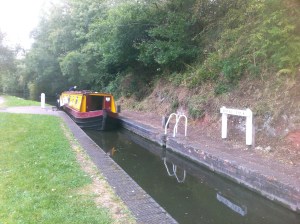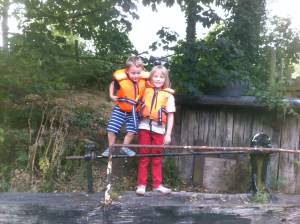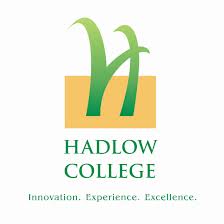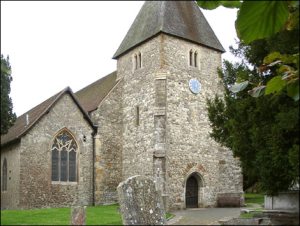Dear Friends,
Some of you, I know, followed my recent trip to the Holy Land on Facebook but I also know that many of you were not able to do this. I therefore wanted to take this opportunity to share with you some of the ‘flavour’ of that week, to share some of my favourite photos and to encourage you to think about joining a parish trip there in Spring 2018.
On 22 June our party of pilgrims (a group of clergy from Rochester Diocese) arrived in Jerusalem in the late afternoon after a long day of travel. The hotel was called ‘Golden Walls’ and it was well named as it was opposite the Roman era walls, specifically the Damascus Gate.
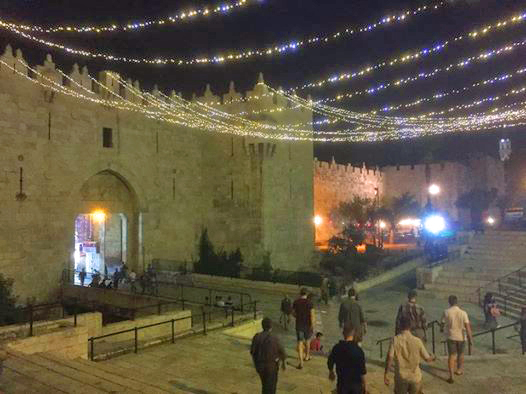
That evening, after dinner, a group of half a dozen of us ventured into the city for an initial exploration. It was an incredible experience. The streets in that part of Jerusalem are a maze of narrow, mostly covered, walkways with open fronted shops on both sides. This is the suqs, or souks, or marketplaces.
It was crowded and hot; the smells of spices, sweets and food were overwhelming and it was a real labyrinth, with every corner and every street looking exactly the same as every other to the untrained eye. It was marvellous. But we were reminded that this was also a place of tension as there were many groups of police around. And these weren’t police as we may think of them, rather they were very young people with machine guns. Although this was a slight shock at first it was interesting that as the week went on how quickly this became the ‘new normal’.
Although it was a labyrinth fortunately one of our number had spent some time in Jerusalem previously and so led us, almost unerringly, to the Church of the Holy Sepulchre. Sadly, it was closing time, and they were just shutting the door and posting the ladder back through the letter box when we arrived. A proper exploration would have to wait for another day.
The next morning I was awoken at 4am by an explosion outside my window. As you can imagine this did cause something of a ‘frisson’. Then I remembered that we had been warned the previous evening that because it was Ramadan there would be such explosions both morning and evening every day to mark the start and end of fasting for the city’s Muslims. Unfortunately the mosque from which the explosion was detonated was right behind the hotel. It looked like over-sleeping was not going to be an issue this week.
This proved to be a very hot but quite wonderful day. We boarded our coach (the “Nazarene Express”) and headed a short way out of the city and uphill to the Mount of Olives. The tradition is that Jesus spent time ministering here as it was where many of the ‘outcasts’ from Jerusalem would have lived. From here we walked down a steep hill to the Orthodox Church and Monastery of St. Mary Magdalene and then onto the Garden of Gethsemane, where there are olive trees said to date from the time of Jesus (they certainly looked very old) and a most church which is bathed perpetually in the purple light of Lent.

Then onto the ruins of the pool of Bethesda (the site of Jesus healing a man in John 5) and then we followed the Via Dolorosa, the route Jesus walked on the first Good Friday to the Church of the Holy Sepulchre. This is the traditional site of Jesus’ crucifixion and burial and, at the foot of the cross, there is a stone on which Jesus is believed to have laid after being taken down from the cross. Above this place icon lamps burn continually. This is a fascinating church with a numinous atmosphere and history but also an interesting present: It is looked after by a number of different Christian denominations but, in order to stop them squabbling, the ‘key holders’ of the church are local Muslims. Have a Google. I love the story about the ladder.
We then went to the ‘Garden Tomb’ which is an alternative (i.e. not traditional) site for the place of Jesus’ burial. The rather evangelistic guide spent much of the tour trying to convince us that we ought to live out our Christian faith publically. Then someone told him we were all Vicars. He was a bit more subdued after that. The Garden Tomb was certainly interesting but our guide from McCabe told us that his Master’s thesis was written on the subject of why the Garden Tomb was not the real site of the burial but was a mere modern interloper. I have to say that I much preferred the Church of the Holy Sepulchre.
The following day (after another 4 am wake-up explosion) we left Jerusalem on the short drive to Bethlehem. Although it is only a short drive it is still a significant journey as it involved crossing from Israeli controlled territory into the Palestinian controlled area. The long, graffiti-strewn wall which separates the Palestinians from the Israelis is remarkable.

Although the wall is an oppressive presence in many ways I was reminded that walls here are nothing new – witness the Roman walls outside our hotel. We were also told (slightly later in the week) by the Dean of St George’s Cathedral that we should refrain from picking sides in this complex dispute. Rather we should pray for all in the Holy Land and, most especially, for peace.
In Bethlehem we visited first the Shepherd’s Fields, the place where the choir of angels appeared to the shepherds on the night of the Nativity, and we celebrated a special Christmas Eucharist in the church there. Our tour leader (Rev’d Chris Dench) made the point that most clergy never get to enjoy worship at Christmas, for obvious reasons, so he invited us to enter to enter into the Christmas spirit. Despite the searing June heat it was a treat so to do.
But the highlight of this day was, undoubtedly, a visit to the Church of the Holy Nativity, built above the place where Jesus was believed to have been born. Sadly much of the church was undergoing a restoration, but this did not affect the grotto itself. Earlier that day I had purchased a Russian icon of the nativity and, when we went into the grotto, I had an opportunity to place my icon of the nativity on the place of the nativity and to spend some time in prayer. This was probably my spiritual apogee of the week, although an event of later that afternoon came a close second.

In the middle of the star there is a hole through which you can put your hand and touch the rock which is believed to have been the ground on which Jesus was born. Rocks and stones actually form a large part of this pilgrimage. There was the stone on which Jesus lay in the Holy Sepulchre, this rock at the Holy Nativity and there are still more to come.
That afternoon we returned through the Israeli checkpoints and back to Jerusalem. The last item on our itinerary was a visit to the Western Wall, aka the Wailing Wall. This is the last remaining part of the Second Temple and the Jewish people pray at the part of the wall that is closet to where the Holy of Holies existed, prior to the destruction of the Temple by the Romans. The Holy of Holies was the central part of the Temple where the Ark of the Covenant sat and where the presence of God dwelt. Of course this place is holy not only to the Jewish people and to Christians but also to Muslims as the Dome on the Rock is built (and named after) the rock on which Abraham prepared to sacrifice his son Isaac and, according to Muslims, the place from which Muhammad ascended to heaven. In the early days of Islam Muslims prayed towards this spot, as the Jews still do, rather than towards Mecca. The Temple Mount therefore features heavily in all three ‘Abrahamic’ faiths and many view this place as the centre of the religious world.
Anyway, we arrived at the Western Wall and were told that there was no problem with non-Jewish people praying at the wall. I donned a kipah (skull cap) and, feeling rather self-conscious made my way through the Orthodox Jews to say a prayer. I prayed for a while and then decided to put both my hands on the wall. I can honestly say that I felt a real ‘zing’ of something more than mere heat from the stones and I was flooded with a real sense of blessing. Not least I felt blessed that in the course of one day I had laid my hands on both the birth place of Christ and on this holy place. And, once again, it reminded me that the places we talk about almost in the abstract are real physical places and that our faith is not simply ephemeral but came through real people who inhabited this real space.
The following day was slightly less ‘holy’ but was nonetheless interesting: we headed out into the Judean wilderness and into the 40 degree plus desert heat. Leaving Jerusalem we drove east to the Qumran National Park. Qumran is the site of a Jewish ‘monastery’ and the place where the Dead Sea Scrolls were discovered in 1946.

We then headed south along the coast of the Dead Sea until we came to Masada. This is the desert hill-top fort, created by Herod the Great, and according to Josephus the place were the first Jewish-Roman war ended in the mass suicide of some 960 people, although modern archaeologists seem to dispute this story.
Finally we continued along the road south to our final stop at the Dead Sea and a chance to float in the unique water. Definitely a ‘bucket list’ moment.

This is the lowest point on the face of the earth. The land on the other side of the sea is the Kingdom of Jordan and Chris Dench was worried that I might be floating there at one point!
The next day was Sunday and we visited St George’s Cathedral in Jerusalem for the Eucharist. It was a wonderfully international affair, as the liturgy took place in both English and Arabic and a visiting choir from Maryland sang for us. A great reminder, should it be needed, that Christianity does not just belong in rural England. In fact we were reminded that the Arabs became Christian long before the English – have a look at Acts 2:11.

After some superb coffee in the courtyard we set off on the Nazarene Express, heading towards Jericho for lunch. Jericho is said to be the oldest continuously inhabited town in the world. Perched high above the town is a Christian monastery and, evidently, there are caves all around that monastery inhabited by hermits who rarely, if ever, leave their caves and exist on a meagre diet of dates and bread lowered down to them in baskets. As we sat eating our lunch I couldn’t help thinking of those hermits perched in caves above us and the fact that they were still there. And, as I write this now many weeks later, they are still there. Sitting in a cave, eating dates and engaged in constant prayer. It is worth thinking about from time to time…
From Jericho we drove north, along the length of the Jordan river to our new home for the next three nights, in the town of Tiberias on the shore of the Sea of Galilee.
The next day (Monday) we visited the ruins of the town of Sepphoris, which would have been a wealthy Roman town in the days of Jesus and, as it was only a few miles from Nazareth, would have been a place where many builders and carpenters (perhaps Joseph and Jesus) would have plied their trade. From Sepphoris we headed into Nazareth itself. Firstly into the Synagogue Church, which is where Jesus is believed to have read from the scroll of Isaiah (Luke 4:16) and then to another of my favourites, the Church of the Annunciation. This is a rather modernist structure which is not overly attractive in itself but which is built over the site of Mary’s house, in which the birth of Jesus was announced to her. For me this was another particularly holy moment, kneeling in prayer here as the Franciscan brothers and priests carried out a short service of thanksgiving and the bells rang out.

Tuesday was our final full day and this was centred around the Sea of Galilee itself. This is, of course, the Sea on which many of the early apostles fished before they were called by Jesus and which plays an important role in many biblical stories, not least when Jesus calmed the storm (Luke 8:22). We started the day by also crossing the Sea by boat but, fortunately the weather remained calm. What I found particularly beautiful here was that, unlike the other places we had visited, this was largely unchanged from the time of Jesus. Being on the water and looking at the surrounding vistas was, once again, to place oneself squarely within the story that we inhabit.

We then celebrated a Eucharist in an open air chapel overlooking the sea (and one would really struggle to find a more beautiful spot so to do) and then finally we spent some time at another rock.
This was the Mensa Christi, or the table of Christ. It is a very large flat rock on the shore of Galilee over which a small church has been built. This rock is where Jesus and the disciples ate and spent time together both before and after the resurrection and, importantly, where Jesus commissioned Peter to be, you guessed it, the rock on which his church would be built. (John 21).

This trip was an important moment in my continuing journey of faith (it doesn’t stop when you get ordained, or at least it shouldn’t) not least because it made so alive, so physical, so rock-like so many places that we think we know but have never touched. To be there, to feel the heat of the sun, the crowdedness of the market places and the sand of the shores of Galilee between your toes is to enter into the story of Jesus in a wonderful way. It also, perhaps unexpectedly, really brought home to me the Jewishness of Jesus and his surroundings and I suspect that we would benefit hugely by recapturing something of the Jewish roots into which we are grafted. But more of that in due course.
For now I hope that I have been able to convey something of that week in the Holy Land. I dearly hope that it will be possible to arrange a parish trip there in Spring 2018 and, if we do, I dearly hope that you will be able to join the trip because it has the potential to be life-changing.
Finally I just wanted to share one of the most touching things our guide said on our first day in Jerusalem. He said: “Welcome home.” And the more I dwell on that the more real it seems.
God Bless,
Paul
















